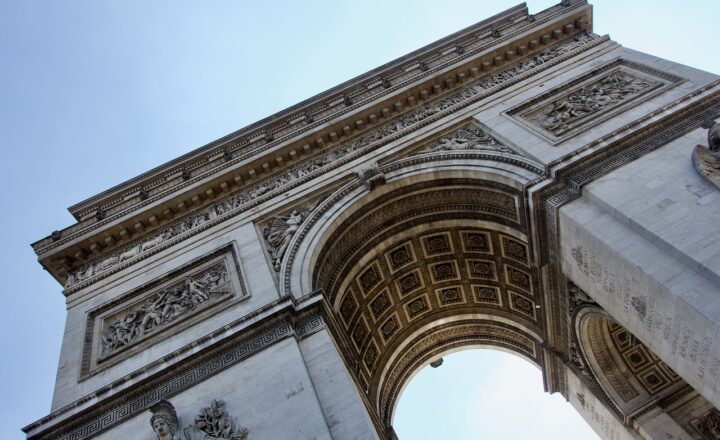The Mystery of Easter Island Statues and How They Were Moved Across the Island
November 12, 2024

Easter Island, known as Rapa Nui to its inhabitants, is one of the most remote inhabited islands in the world. Located in the southeastern Pacific Ocean, it is best known for its astonishing archaeological site featuring nearly 900 massive stone statues, known as moai. These iconic figures, carved from volcanic tuff, have puzzled historians and archaeologists for centuries, primarily regarding how the ancient Rapa Nui people moved them across the island. In this article, we delve into the mystery of the Easter Island statues, exploring their history, cultural significance, and the ingenious methods potentially used to transport these colossal structures.
1. The Origin of the Moai Statues
The moai statues were constructed primarily between the 1400s and 1650 CE at the height of the Rapa Nui culture. The statues were intended to honor important ancestral figures, serving both spiritual and political functions within the community. It is believed that the larger the statue, the greater the mana (spiritual energy) it possessed, which in turn conferred power and status upon its lineage.
Made predominantly from volcanic tuff, combined with basalt and red scoria stone, the moai stand at impressive heights—averaging around 13 feet and weighing over 14 tons each. Their faces, often characterized by elongated features and broad noses, are thought to reflect the revered ancestors of the Rapa Nui people.
The construction and erection of these massive figures illustrated a significant investment in labor and resources, which raises intriguing questions about the social organization and logistical capabilities of the Rapa Nui society.
2. The Enigma of Transportation
The most captivating aspect of the moai is how the ancient Rapa Nui successfully transported these giants across rugged terrain to their respective ceremonial sites. Considering the weight and size of the statues, scholars have proposed various theories about their movement:
A. The Rolling Theory
One widely circulated hypothesis suggests that the moai were moved by rolling them on logs. This method would require the careful alignment of logs and a significant number of laborers to rotate and push the moai forward. However, this theory struggles with the uneven terrain and the potential for damage to the statues during the rolling process.
B. The Sliding Method
Another proposal indicates that the statues were slide-transported over a slick surface. This theory posits creating a sled-like structure from wooden planks or palm fronds, making it easier to slide the statues across the ground. This, too, would present challenges—especially with the risk of the moai being damaged or the sliding causing friction burns to the stone.
C. The Walking Technique
Recent studies have explored the idea that the Rapa Nui figureheads were moved through a rocking or ‘walking’ motion involving ropes tied around the statues. Researchers demonstrated that the moai could be ‘walked’ forward by swaying them from side to side. This method allows the statue to pivot and step forward without causing damage, making it the most plausible transportation technique given the island’s unique logistical demands.
3. The Role of Community in the Creation of Moai
Creating and erecting moai required extensive collaborative efforts. The Rapa Nui culture placed significant value on social hierarchy and community engagement, as the construction involved skilled artisans, laborers, and ceremonial leaders. The communal approach reflected their social structure, where different families worked together to build and transport their ancestor’s statues.
Communal rituals were deeply rooted in the process, as carving and moving the moai were not merely practical tasks but significant cultural expressions embodying a relationship with their ancestors. The successful movement of moai signified not just technical prowess but also a thriving society backed by shared beliefs, labor, and resources.
4. The Impact of Environment on Moai Transportation
The unique landscape of Easter Island posed significant challenges. The island’s volcanic terrain is characterized by steep hills, rocky paths, and limited resources. Additionally, the once-abundant palm trees that would have provided materials for transportation were largely depleted due to deforestation, forcing the Rapa Nui to adapt their methods based on available resources.
Modern technological advancements, such as GPS mapping and archaeological studies, have enabled researchers to examine the rocks and paths used during the transportation process. These studies reveal the moai’s journey may have been coordinated through navigated routes, minimizing wear and tear while optimizing workflow efficiency.
5. The Cultural Legacy of the Moai
Today, the moai represent more than just archaeological wonders; they symbolize the ingenuity of the Rapa Nui people. The statues continue to draw researchers, tourists, and enthusiasts to Easter Island, fostering an appreciation for the rich cultural history and technical sophistication of these ancient artisans.
Furthermore, the degradation of the statues due to environmental factors and human impact represents an urgent cultural and ecological concern. Current restoration efforts aim to preserve the moai, ensuring their legacy persists for future generations.
Conclusion
The mystery of the Easter Island statues is not solely about their physical movement; it encapsulates the broader narrative of a civilization that thrived through collaboration, creativity, and resilience. The various transportation theories continue to inspire research and stimulate curiosity about human achievements in overcoming obstacles. The moai stand as a testament to the ingenuity of the Rapa Nui people, leaving a rich legacy for generations yet to come.
Easter Island’s moai remain symbols of human tenacity, reflecting the harmony between culture and logistics, making them an invaluable part of our world’s history.








